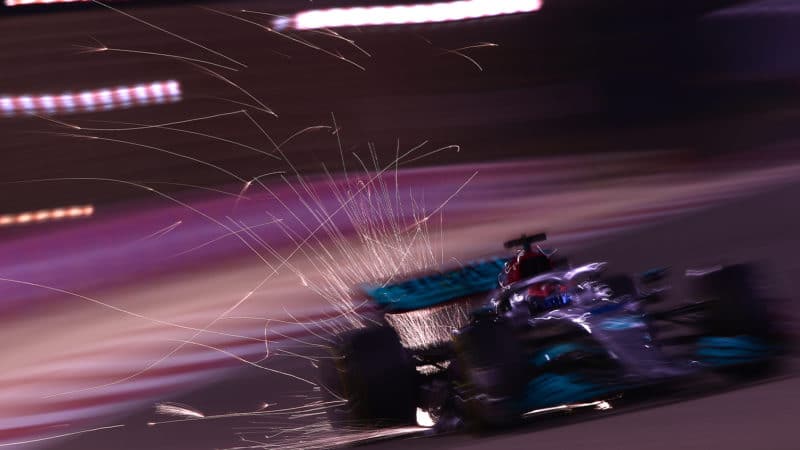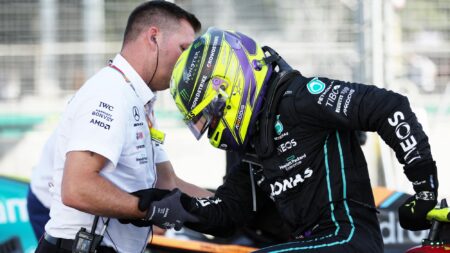At the time of writing there was still much to be formulated but the basic idea is that a vertical acceleration limit will be set. Any team with a car going above that will have to change its set up (ie using ride height) to bring the accelerations within the prescribed limit. The accelerations are already measured by sensors in the middle of the car which feed information to the FIA ECU fitted to all cars.
Once the acceptable limit has been decided upon following data analysis from the two Friday practice sessions, the teams will be informed prior to FP3 on Saturday what that limit is.
Speaking to Sky, George Russell welcomed the FIA’s unilateral action, saying it was far better than weeks and months of politics and negotiation before anything was done.
It has been perceived in some quarters that the change has been made in response to a Mercedes campaign for it, given that its competitiveness is probably more adversely affected by porpoising and bouncing than any other car. But if there was a campaign it would have been for a regulation change, not merely a technical directive which will probably force Mercedes to surrender more performance than it otherwise would have. In terms of the likely effect on the competitive order, logically this new technical directive should help Red Bull – with a car relatively unaffected by porpoising but still extremely quick regardless – relative to Ferrari, which has a very quick but heavily porpoising car. Mercedes, in being forced to run at a higher ride height, should logically be less competitive than before. For all that the car’s bouncing problem in Baku was diabolically bad, it was comfortably the third-quickest car there.
Inevitably, not everyone is going to be happy about this change. But it’s been made for all the right reasons.



